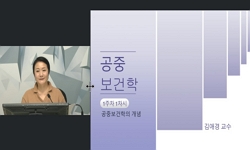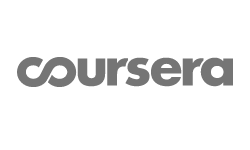Purpose: The overactive bladder symptom score (OABSS) consists of 4 questions regarding OAB symptoms. The aim of this study was to develop Korean version of the OABSS from the original Japanese version, with subsequent linguistic validation. Methods: ...
http://chineseinput.net/에서 pinyin(병음)방식으로 중국어를 변환할 수 있습니다.
변환된 중국어를 복사하여 사용하시면 됩니다.
- 中文 을 입력하시려면 zhongwen을 입력하시고 space를누르시면됩니다.
- 北京 을 입력하시려면 beijing을 입력하시고 space를 누르시면 됩니다.



Korean Version of the Overactive Bladder Symptom Score Questionnaire: Translation and Linguistic Validation
한글로보기https://www.riss.kr/link?id=A101597547
-
저자
정성진 (서울대학교) ; Yukio Homma (Univ of Tokyo) ; 오승준 (서울대학교)
- 발행기관
- 학술지명
- 권호사항
-
발행연도
2011
-
작성언어
English
- 주제어
-
등재정보
KCI등재,SCIE,SCOPUS
-
자료형태
학술저널
- 발행기관 URL
-
수록면
135-142(8쪽)
-
KCI 피인용횟수
10
- 제공처
- 소장기관
-
0
상세조회 -
0
다운로드
부가정보
다국어 초록 (Multilingual Abstract)
Purpose: The overactive bladder symptom score (OABSS) consists of 4 questions regarding OAB symptoms. The aim of this study was to develop Korean version of the OABSS from the original Japanese version, with subsequent linguistic validation.
Methods: Between February and May 2008, the translation and linguistic validation process was performed as follows: a forward translation, reconciliation, backward translation, cognitive debriefing, and final proofreading.
Results: A forward translation from the original version of the OABSS to the Korean language was carried out by 2 native Korean speakers, who were also fluent in Japanese. Reconciliation was made after review of both translations by a panel consisting of both translators and one of the authors. Another bilingual translator who had never seen the original version of the OABSS carried out a translation of the reconciled version back into Japanese, and the original and backward-translated versions were subsequently compared. After discussion of all discrepancies between both versions by the panel, a second Korean version was produced. During cognitive debriefing, 5 outpatients with OAB reported that each question of the Korean version was significant and appropriate for their symptoms. However, 2 patients said that some parts of the questions or instructions were not clear or were not easy to understand. According to the cognitive debriefing, some words and phrases were revised into more understandable expressions.
Conclusions: A Korean version of the OABSS was developed and linguistic validation was performed. Further studies are needed to assess the reproducibility and validity of the questionnaire in Korean populations.
참고문헌 (Reference)
1 Tanaka Y, "Urodynamic effects of solifenacin in untreated female patients with symptomatic overactive bladder" 17 : 796-800, 2010
2 Tsujimura A, "Urgency is an independent factor for sleep disturbance in men with obstructive sleep apnea" 76 : 967-970, 2010
3 Oh SJ, "Translation and linguistic validation of Korean version of the Incontinence quality of life(I-QoL) instrument" 6 : 10-23, 2002
4 손환철, "Translation and Linguistic Validation of the Korean Version of the Pelvic Pain and Urgency/Frequency Patient Symptom Scale" 대한배뇨장애요실금학회 14 (14): 112-121, 2010
5 Abrams P, "The standardisation of terminology of lower urinary tract function: report from the Standardisation Sub-committee of the International Continence Society" 21 : 167-178, 2002
6 Chapple CR, "The role of urinary urgency and its measurement in the overactive bladder symptom syndrome: current concepts and future prospects" 95 : 335-340, 2005
7 Zinner N, "The overactive bladder-symptom composite score: a composite symptom score of toilet voids, urgency severity and urge urinary incontinence in patients with overactive bladder" 173 : 1639-1643, 2005
8 Coyne KS, "The impact of overactive bladder on mental health, work productivity and health-related quality of life in the UK and Sweden: results from EpiLUTS" (3) : 2011
9 문승진, "The Influence of an Overactive Bladder on Falling: A Study of Females Aged 40 and Older in the Community" 대한배뇨장애요실금학회 15 (15): 41-47, 2011
10 Matza LS, "Test-retest reliability of four questionnaires for patients with overactive bladder: the overactive bladder questionnaire (OAB-q), patient perception of bladder condition (PPBC), urgency questionnaire (UQ), and the primary OAB symptom questionnaire (POSQ)" 24 : 215-225, 2005
1 Tanaka Y, "Urodynamic effects of solifenacin in untreated female patients with symptomatic overactive bladder" 17 : 796-800, 2010
2 Tsujimura A, "Urgency is an independent factor for sleep disturbance in men with obstructive sleep apnea" 76 : 967-970, 2010
3 Oh SJ, "Translation and linguistic validation of Korean version of the Incontinence quality of life(I-QoL) instrument" 6 : 10-23, 2002
4 손환철, "Translation and Linguistic Validation of the Korean Version of the Pelvic Pain and Urgency/Frequency Patient Symptom Scale" 대한배뇨장애요실금학회 14 (14): 112-121, 2010
5 Abrams P, "The standardisation of terminology of lower urinary tract function: report from the Standardisation Sub-committee of the International Continence Society" 21 : 167-178, 2002
6 Chapple CR, "The role of urinary urgency and its measurement in the overactive bladder symptom syndrome: current concepts and future prospects" 95 : 335-340, 2005
7 Zinner N, "The overactive bladder-symptom composite score: a composite symptom score of toilet voids, urgency severity and urge urinary incontinence in patients with overactive bladder" 173 : 1639-1643, 2005
8 Coyne KS, "The impact of overactive bladder on mental health, work productivity and health-related quality of life in the UK and Sweden: results from EpiLUTS" (3) : 2011
9 문승진, "The Influence of an Overactive Bladder on Falling: A Study of Females Aged 40 and Older in the Community" 대한배뇨장애요실금학회 15 (15): 41-47, 2011
10 Matza LS, "Test-retest reliability of four questionnaires for patients with overactive bladder: the overactive bladder questionnaire (OAB-q), patient perception of bladder condition (PPBC), urgency questionnaire (UQ), and the primary OAB symptom questionnaire (POSQ)" 24 : 215-225, 2005
11 Homma Y, "Symptom severity and patient perceptions in overactive bladder: how are they related" 104 : 968-972, 2009
12 Homma Y, "Symptom assessment tool for overactive bladder syndrome--overactive bladder symptom score" 68 : 318-323, 2006
13 Lee YS, "Prevalence of overactive bladder, urinary incontinence, and lower urinary tract symptoms: results of Korean EPIC study" SPRINGER 29 (29): 185-190, 2011
14 Coyne KS, "National community prevalence of overactive bladder in the United States stratified by sex and age" 77 : 1081-1087, 2011
15 오승준, "King's Health Questionnaire의 한국어 번역 및 번역본의 언어 타당도" 대한비뇨기과학회 46 (46): 438-450, 2005
16 Gotoh M, "Japanese Propiverine Study Group. Propiverine hydrochloride in Japanese patients with overactive bladder: a randomized, double-blind, placebo-controlled trial" 18 : 365-373, 2011
17 Heidler S, "Impact of overactive bladder symptoms on sexuality in both sexes" 85 : 443-446, 2010
18 Watanabe M, "Efficacy of extended-release tolterodine for the treatment of neurogenic detrusor overactivity and/or low-compliance bladder" 17 : 931-936, 2010
19 Homma Y, "Development and validity of the Overactive Bladder Symptom Score (OABSS)" 96 : 182-, 2005
20 Yamaguchi O, "Clinical guidelines for overactive bladder" 16 : 126-142, 2009
21 Homma Y, "Assessment of overactive bladder symptoms: comparison of 3-day bladder diary and the overactive bladder symptoms score" 77 : 60-64, 2011
22 Novara G, "A systematic review and meta-analysis of randomized controlled trials with antimuscarinic drugs for overactive bladder" 54 : 740-763, 2008
동일학술지(권/호) 다른 논문
-
Atrophy of the Tongue as the Presenting Feature of Metastatic Prostate Cancer
- 대한배뇨장애요실금학회
- Zreik Abdullah
- 2011
- KCI등재,SCIE,SCOPUS
-
- 대한배뇨장애요실금학회
- 김두상
- 2011
- KCI등재,SCIE,SCOPUS
-
Voiding Dysfunction after Total Mesorectal Excision in Rectal Cancer
- 대한배뇨장애요실금학회
- 김재헌
- 2011
- KCI등재,SCIE,SCOPUS
-
- 대한배뇨장애요실금학회
- 이광수
- 2011
- KCI등재,SCIE,SCOPUS
분석정보
인용정보 인용지수 설명보기
학술지 이력
| 연월일 | 이력구분 | 이력상세 | 등재구분 |
|---|---|---|---|
| 2023 | 평가예정 | 해외DB학술지평가 신청대상 (해외등재 학술지 평가) | |
| 2020-01-01 | 평가 | 등재학술지 유지 (해외등재 학술지 평가) |  |
| 2012-01-01 | 평가 | 등재 1차 FAIL (등재유지) |  |
| 2010-04-30 | 학술지명변경 | 한글명 : 대한배뇨장애요실금학회지 -> International Neurourology Journal외국어명 : The Journal of Korean Continence Society -> International Neurourology Journal |  |
| 2009-01-01 | 평가 | 등재학술지 선정 (등재후보2차) |  |
| 2008-01-01 | 평가 | 등재후보 1차 PASS (등재후보1차) |  |
| 2007-04-26 | 학술지명변경 | 한글명 : 대한배뇨장애 및 요실금학회지 -> 대한배뇨장애요실금학회지외국어명 : 미등록 -> The Journal of Korean Continence Society |  |
| 2007-03-13 | 학회명변경 | 한글명 : 대한배뇨장애 및 요실금학회 -> 대한배뇨장애요실금학회 |  |
| 2007-01-01 | 평가 | 등재후보학술지 유지 (등재후보1차) |  |
| 2006-03-29 | 학술지명변경 | 한글명 : 대한배뇨장애 및 요실금학회지 Vol.5, No.1 -> 대한배뇨장애 및 요실금학회지 |  |
| 2005-01-01 | 평가 | 등재후보학술지 선정 (신규평가) |  |
학술지 인용정보
| 기준연도 | WOS-KCI 통합IF(2년) | KCIF(2년) | KCIF(3년) |
|---|---|---|---|
| 2016 | 1.74 | 0.51 | 1.26 |
| KCIF(4년) | KCIF(5년) | 중심성지수(3년) | 즉시성지수 |
| 0.96 | 0.75 | 0.628 | 0.03 |




 KCI
KCI







